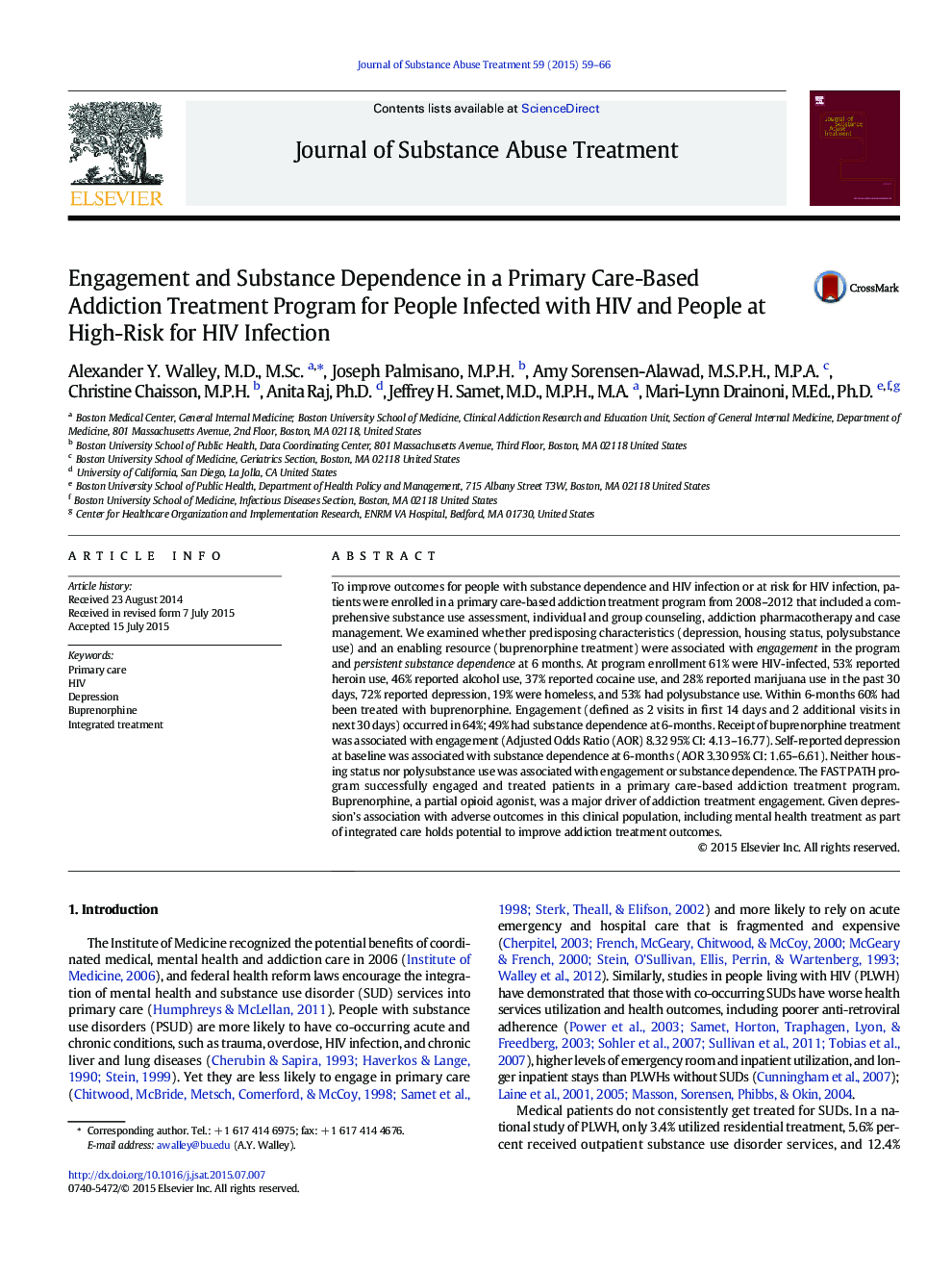| کد مقاله | کد نشریه | سال انتشار | مقاله انگلیسی | نسخه تمام متن |
|---|---|---|---|---|
| 328750 | 543404 | 2015 | 8 صفحه PDF | دانلود رایگان |

• Among people with substance dependence and HIV or high-risk for HIV, 64% engaged in an addiction treatment program integrated into primary care.
• At 6-months after starting the program, 60% had been treated with buprenorphine and buprenorphine treatment was associated with engagement.
• Self-reported depression was common and associated with persistent substance dependence at 6 months.
To improve outcomes for people with substance dependence and HIV infection or at risk for HIV infection, patients were enrolled in a primary care-based addiction treatment program from 2008–2012 that included a comprehensive substance use assessment, individual and group counseling, addiction pharmacotherapy and case management. We examined whether predisposing characteristics (depression, housing status, polysubstance use) and an enabling resource (buprenorphine treatment) were associated with engagement in the program and persistent substance dependence at 6 months. At program enrollment 61% were HIV-infected, 53% reported heroin use, 46% reported alcohol use, 37% reported cocaine use, and 28% reported marijuana use in the past 30 days, 72% reported depression, 19% were homeless, and 53% had polysubstance use. Within 6-months 60% had been treated with buprenorphine. Engagement (defined as 2 visits in first 14 days and 2 additional visits in next 30 days) occurred in 64%; 49% had substance dependence at 6-months. Receipt of buprenorphine treatment was associated with engagement (Adjusted Odds Ratio (AOR) 8.32 95% CI: 4.13–16.77). Self-reported depression at baseline was associated with substance dependence at 6-months (AOR 3.30 95% CI: 1.65–6.61). Neither housing status nor polysubstance use was associated with engagement or substance dependence. The FAST PATH program successfully engaged and treated patients in a primary care-based addiction treatment program. Buprenorphine, a partial opioid agonist, was a major driver of addiction treatment engagement. Given depression’s association with adverse outcomes in this clinical population, including mental health treatment as part of integrated care holds potential to improve addiction treatment outcomes.
Journal: Journal of Substance Abuse Treatment - Volume 59, December 2015, Pages 59–66